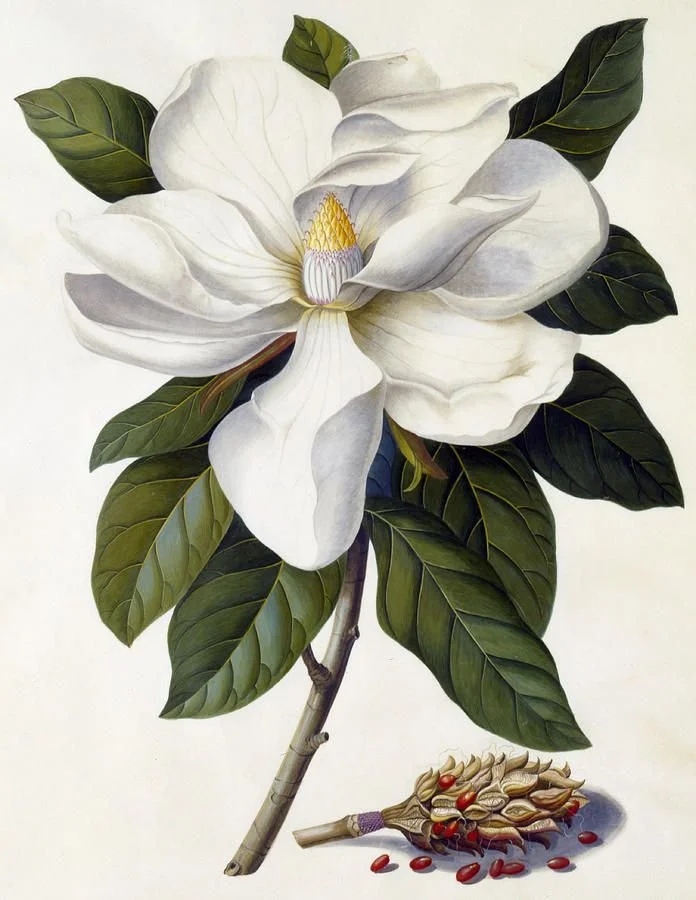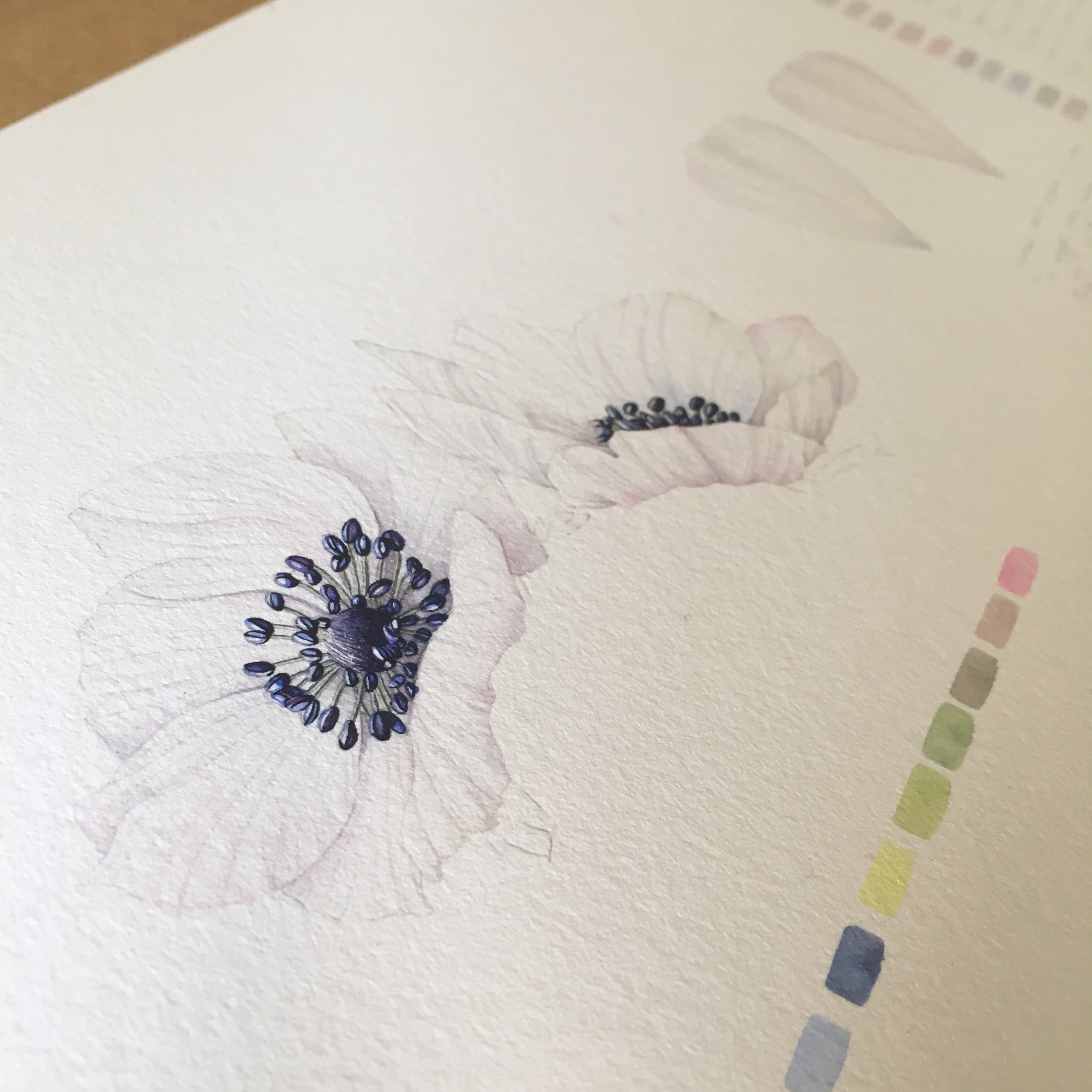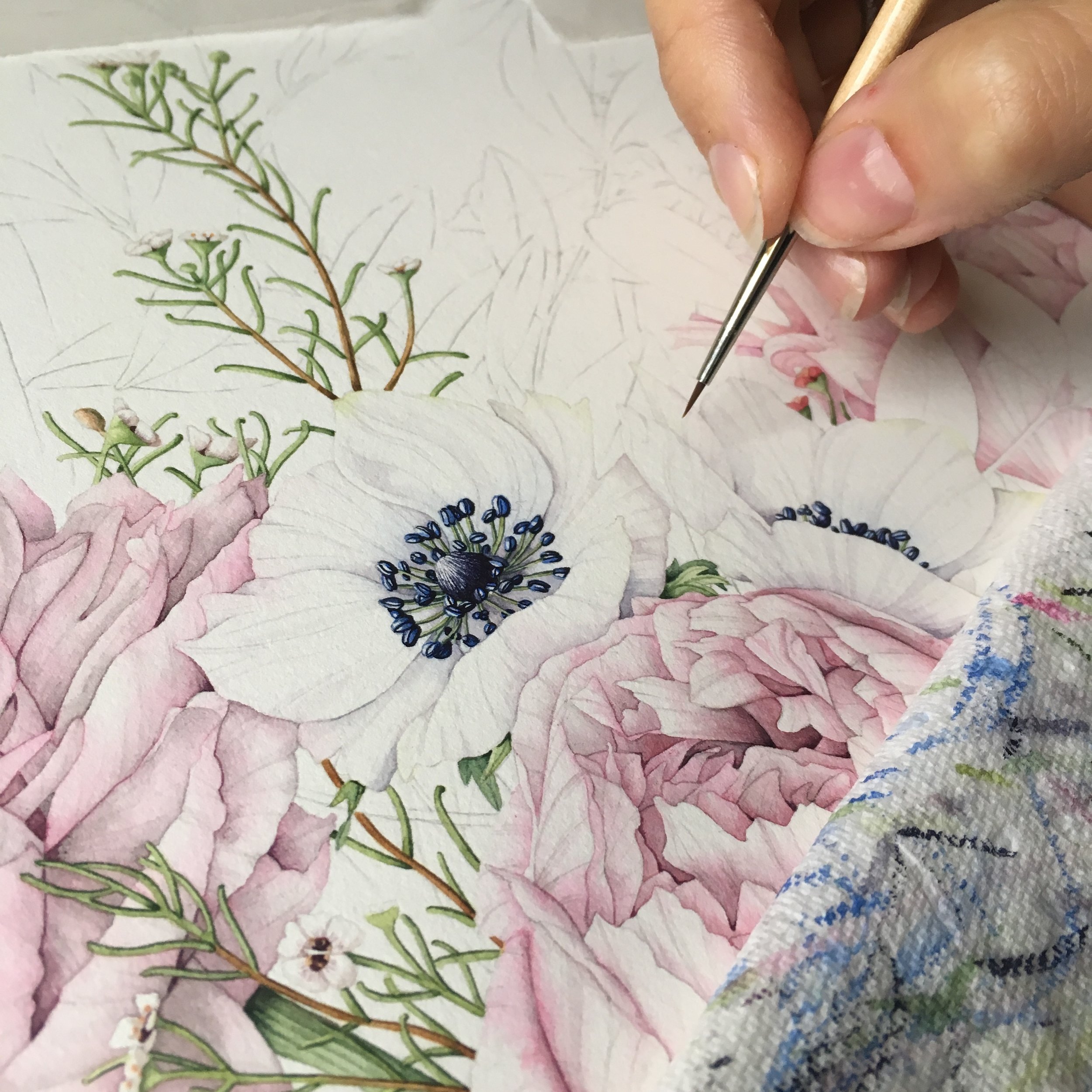Painting White Flowers
My top 5 tips.
The Bull Bay (Magnolia grandiflora) by Georg Dionysius Ehret. 1743.
Painting white flowers are notoriously tricky, and I am often asked about the best way to go about it. I always used to shy away from white (and yellow!) flowers, but once you've learnt some basic steps, they really are quite fun to paint! The difficulty is finding the balance between making them dark enough to 'pop' out of the paper, but without using so much colour and/or grey and losing the fact that they're white!
So, should you use colour? Payne's Grey? Pencil?? Here is a short summary of my top 5 tips for painting white flowers.
1. Use your foliage
An effective way to make your white flowers shine out of the page is to use your foliage as a background. I don't want to spend too long discussing this, as part of me feel it's a bit of a shortcut - dare I say cheat... but saying that, look at Georg Ehret's Magnolia (one of my favourite paintings) - he used this trick (consciously or not!) very successfully. Don't neglect the flower, though! And keep the composition looking natural, not forced.
2. Keep your graphite light
When you're drawing onto your watercolour paper (or transferring, as I do), ensure that your graphite on the paper is light. Any lines that are drawn too dark will easily show on white flowers. Also, be aware that it's also obvious when graphite has been used to 'edge' the petals. Keep it light, and use your paint to demonstrate form!
3. Look for colour
Look for colour on your white flower - there may be some slight tinges of colour in the petals. Colour may also be reflected off other surrounding leaves or flowers - or even from the flower's stamens, as in my anemone below. You may need to tone down your colours slightly (absorbing them into a 'botanical grey' as discussed below), but search for them and use them to your advantage! You can see this demonstrated in my anemone painting below - if you look closely you will see small tinges of pink near the peonies, and in the centre I have used cobalt blue to show the colour reflected from the stamens.
4. Mix your botanical grey
I would always advise people to mix a natural 'botanical grey', rather than use a grey paint such as Payne's Grey, from a tube. It will look much more natural. You can mix a grey from 3 primary colours. I like selecting the ones I have already used in my painting (such as in the foliage), to create unity in the piece. You can see my example below, where I have mixed all those different grey's from just 3 colours - using different amounts of red, blue and yellow pigments!
You can then use this grey to add your shadows, either using washes, or adding fine detail with a dry brush. Detail will give interest, and shape, to the petals. Make sure you keep your highlights completely white!
5.Tone & contrast
When I'm struggling with my white flowers, I always go back to tone. It's important to remember that just because a flower is white, it has the same tonal values as other colours. Using dark pigment in very select areas will make your flower stand out from the page.
I hope you have found this post useful! I wrote this piece because a lot of you were asking for tips after I posted these photos on Instagram. I do listen to you, and I love hearing the things you would like me to write about. So, please comment below or send me an email.
I send out regular updates, and often content and tips and tricks that I don't share on here or social media, to my email list. Please sign up below if you don't want to miss anything!



